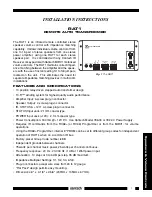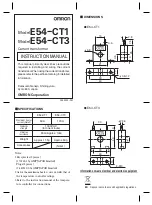
NDD Series - NO2 Transmitter
Installation Manual
Feb 2, 2016
NDD-INS-002
Page 1
Introduction
The NO2 Transmitter uses an electrochemical sensor to monitor the NO2
level and outputs a 4-20 mA signal. It features a 3-wire analog output and
an alarm relay .
Before Installation
Read these instructions carefully before installing and commissioning the
NO2 transmitter. Failure to follow these instructions may result in product
damage. Do not use in an explosive or hazardous environment, with
combustible or flammable gases, as a safety or emergency stop device or
in any other application where failure of the product could result in
personal injury. Take electrostatic discharge precautions during
installation and do not exceed the device ratings.
Operation
In normal operation the sensor will measure the NO2 level in the surrounding air and output a proportional value on the 4-20
mA output. The NO2 measurement range is 0 to 10 ppm. The relay can be used to indicate an alarm condition. The trip point
for the relay can be programmed to three different settings with an on-board jumper. If the NO2 level exceeds the trip point
then the relay is activated. The relay will remain activated until the NO2 level drops below the (trip level – hysteresis) where
hysteresis is 3%
.
Start-up
Verify that the NO2 Transmitter is properly wired according to the wiring diagrams and all connections are tight. Apply
power to the device and the sensor will begin reading the NO2 level and output the analog signal.
Mounting
The NO2 enclosure should be mounted on a flat surface three to five feet from the floor of the area to be controlled. Do not
mount the sensor near doors, opening windows, supply air diffusers or other known air disturbances. Avoid areas with
vibrations or rapid temperature changes.






















